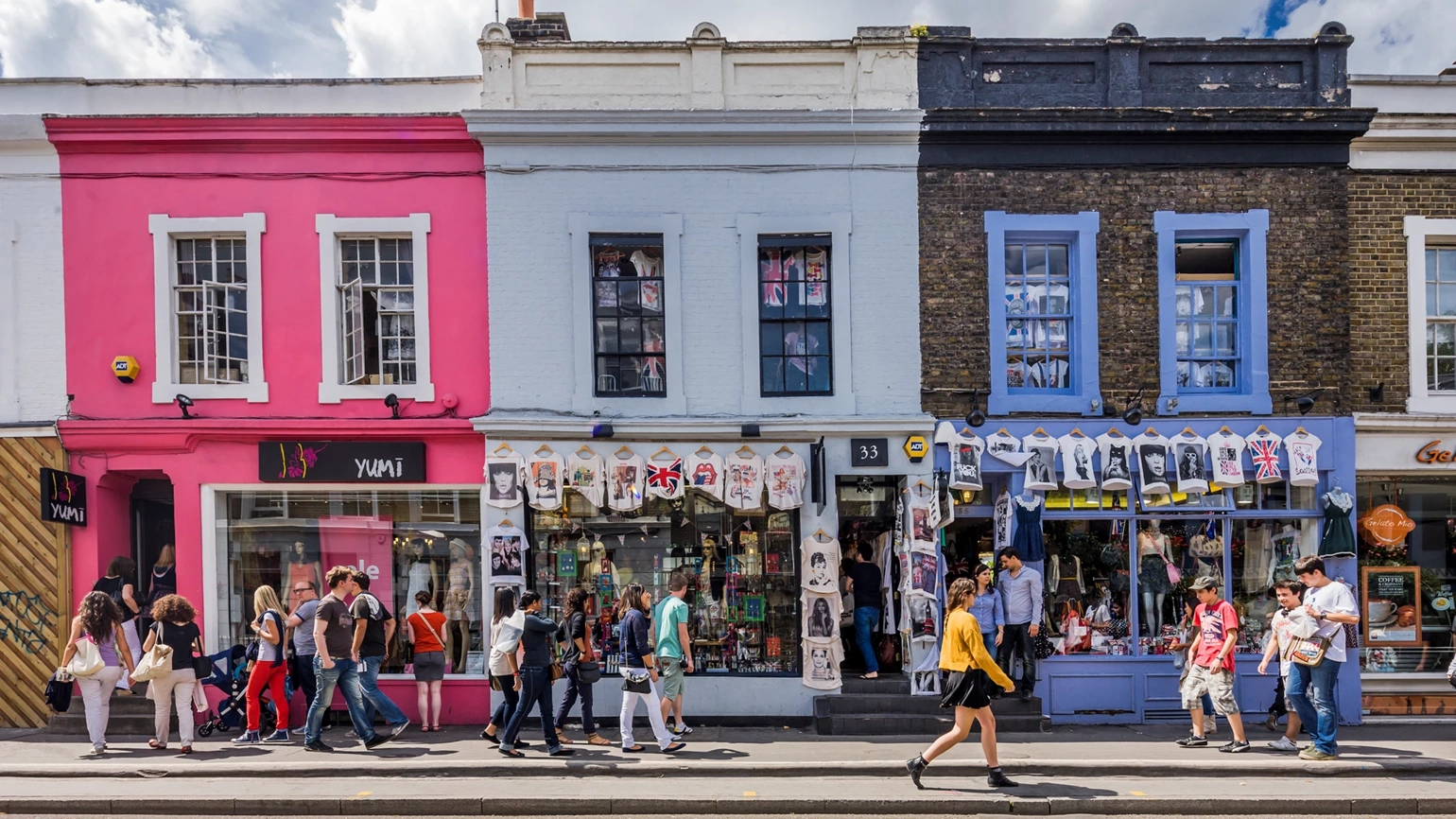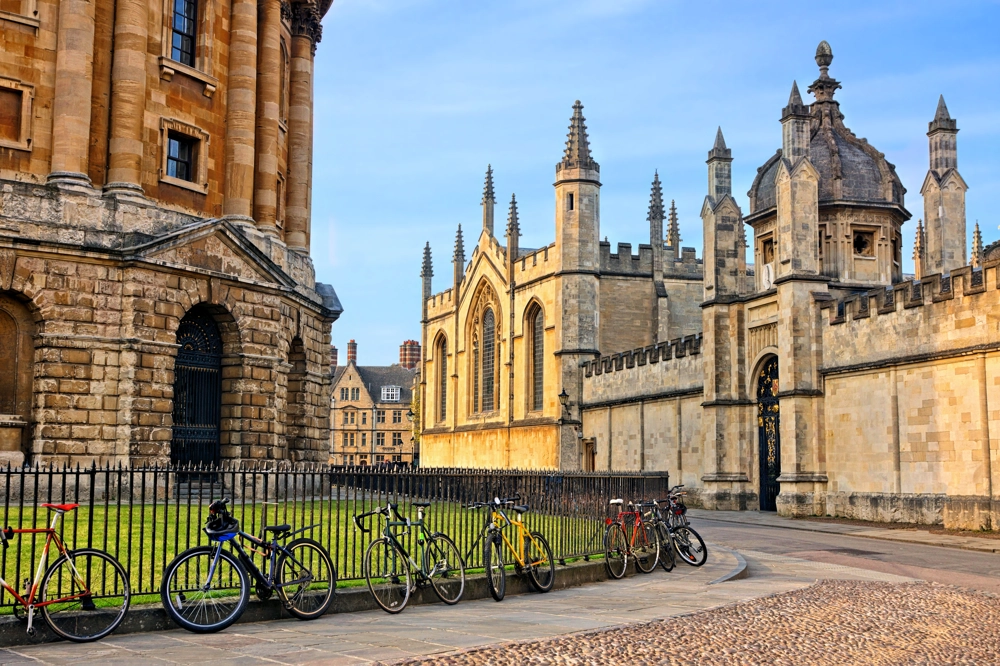There’s no place like home.
High streets are at the heart of our communities. Since their Victorian origins in the 1860s and 1870s, our main shopping parades have become part of the fabric of our lives. In fact, the clue is in the name – ‘High Street’ is the most common street name in the UK.
And after all this time, Britons are still fond of strolling down to the shops.
We discovered:
- On average, people pop to their high street 81 times a year (of those who said they visit high streets). This was highest in Glasgow (93 visits), London (92 visits) and Cardiff (87 visits).
- Britain likes a trolley dash, as supermarkets were revealed to be the most frequently visited establishments (selected by 40% of respondents).
- Convenience was mentioned as the most enjoyable reason to visit the high street – cited by 36% of those polled.
- Times have been hard on the high street, and 45% of people say they’ve noticed more shops closing down over the past couple of years.
- Those polled said a wider choice of shops (35%) would be the biggest pull factor for getting them back onto the high street. Music shops (25%) were the missing shop that people would most like to see.
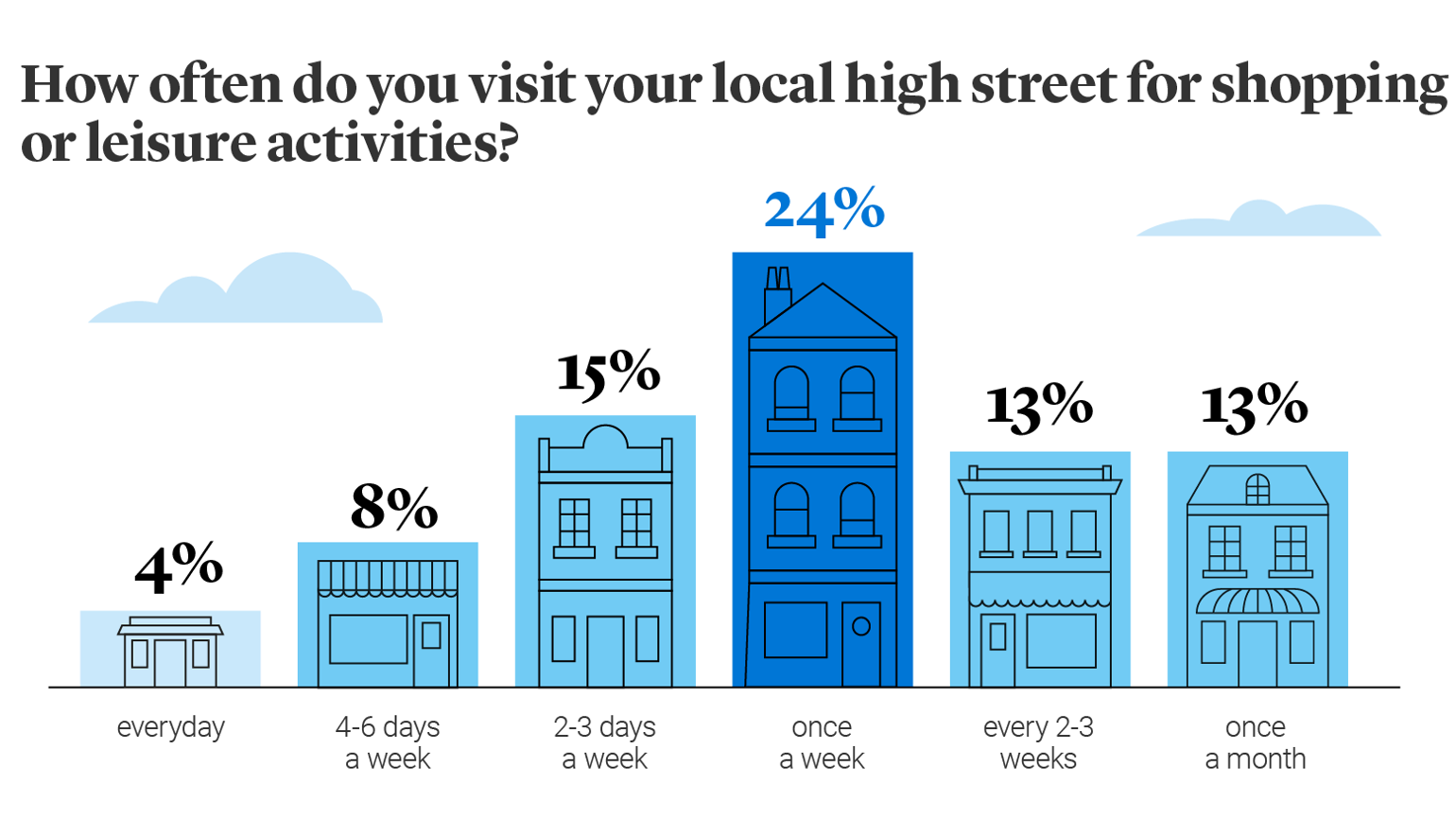
Of those who head to the high street, the average number of visits was 81 times a year. Enthusiasm was highest in Glasgow (93 visits), London (92 visits) and Cardiff (87 visits).
But what are people venturing out to see and do? We asked respondents to list up to three places they tend to frequent on the high street.
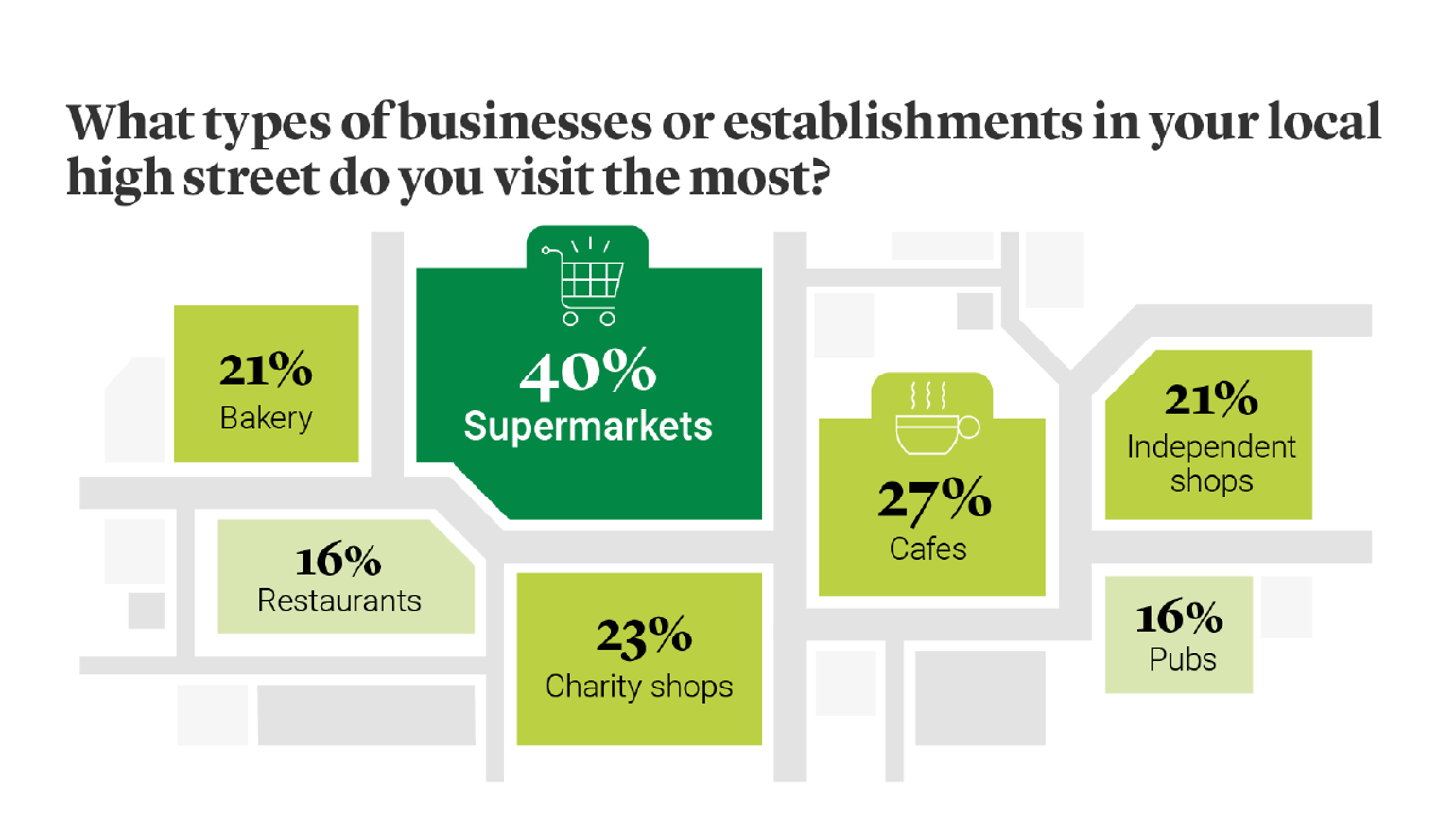
While supermarkets reigned supreme, this wasn’t the case everywhere. In Edinburgh, for example, people were more likely to say they visit cafes (26%) and charity shops (26%) than supermarkets (24%). Similarly, in Bristol, cafes (30%) and charity shops (30%) were level pegging, with supermarkets third on 29%.
We asked the public what they appreciate most about their high streets. Here is a snapshot of some of the themes that emerged.
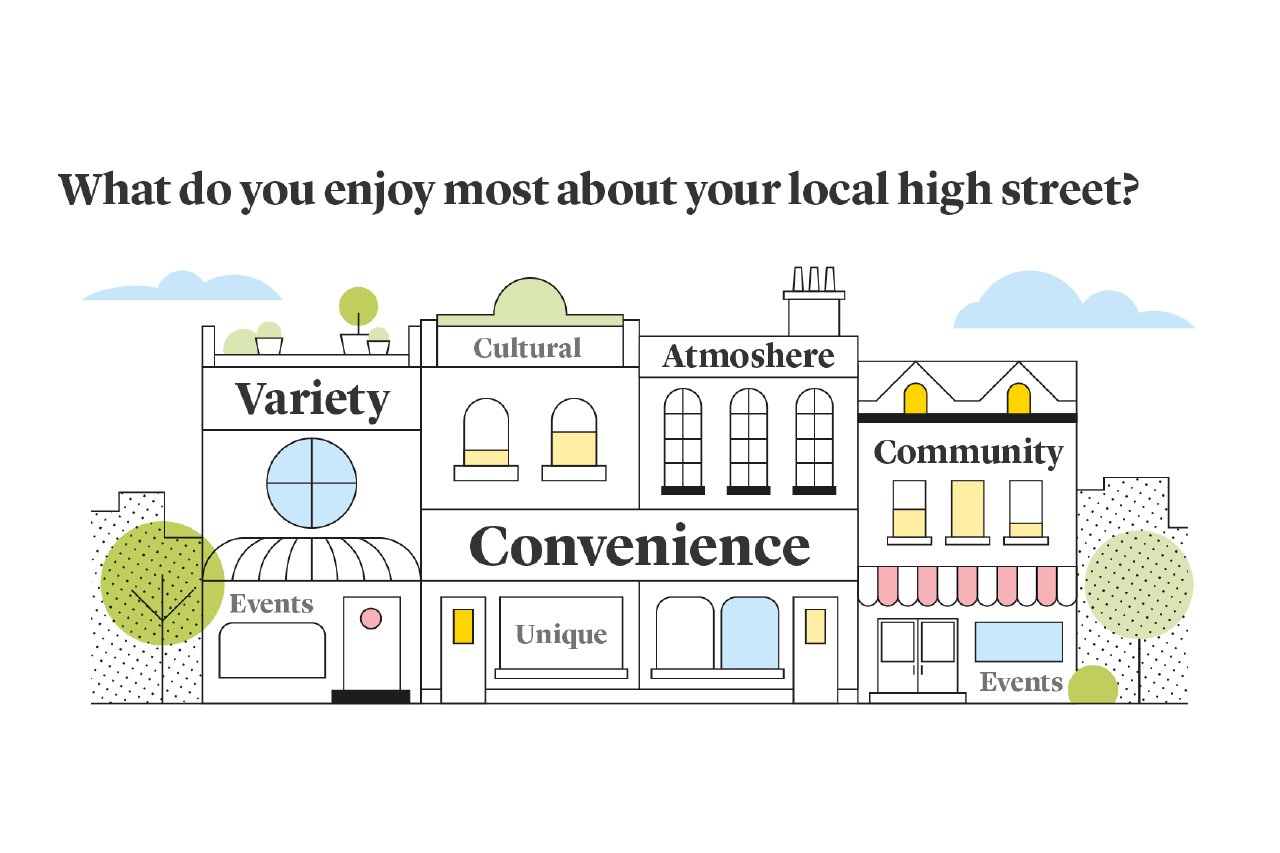
Looking closely at our findings, age and geography are some of the factors that influence our relationship with the nearest high street.
- 36% said convenience is what they enjoy most, which rose to 41% among the oldest age group (aged 55+).
- Almost a quarter (24%) said the variety of shops and businesses was the biggest appeal. The youngest age group (16-24-year-olds) were most likely (34%) to mention this factor.
- People in Scotland were most likely to say “supporting the local community” (24%) is the aspect they enjoy most about their high street.
The high street in hard times
While the UK public’s love affair with the high street endures, it’s fair to say the last few years have been anything but ‘easy street’.
No high street has been immune from the cost of living crisis, competition from online retailers and frequent shop closures in the wake of the COVID-19 pandemic. In fact, the British Retail Consortium’s recent figures (published July 2023) showed that the UK has lost 6,000 storefronts in five years, while high street vacancies reached 13.9%.
Indeed, this high street upheaval has not gone unnoticed by the shoppers we polled. We asked people what differences they’ve spotted on their local high street over the last couple of years.
- 45% said they’ve noticed that more shops have closed down
- 37% say they’ve seen fewer retail shops.
- 17% have noticed that independent shops have been replaced by big brands.
Once again, regional differences emerge. People in Wales (54%) and the South West (50%) were most likely to say they’ve noticed shop closures.
Meanwhile, those who grew up with thriving high streets were perhaps the most sensitive to recent changes, as a majority (56%) of respondents aged over 55 have noted the shop closures in their community.
Changing high street habits
Change is never easy, but perhaps the high street is simply evolving in the age of online shopping, remote working and big brand shopping centres, which are often located in the outskirts of cities and towns.
Are we simply looking for something different when it comes to the high streets of today? We asked the public to list some of the ways they show support to their nearest high street area.

As our survey suggests, high streets are perhaps becoming less about the transaction and more about the experience. Whether it’s meeting friends for coffee, grabbing a bite to eat or trying on new clothes, it’s fair to say the high street offers an experience that simply can’t be replicated online.
And for some it runs deeper. High streets can evoke precious memories, and give our towns, villages and suburbs their own distinct identity. 36% of those we polled said local businesses are important for the character and identity of their community.
Even the rise of the charity shop – 37% have visited one in the last year – has given high streets some popular local shopping options. 38% told us they find charity shops cheaper than regular stores, 34% appreciate the unique finds, while 30% say they like giving money to charity shops because it’s a good cause.
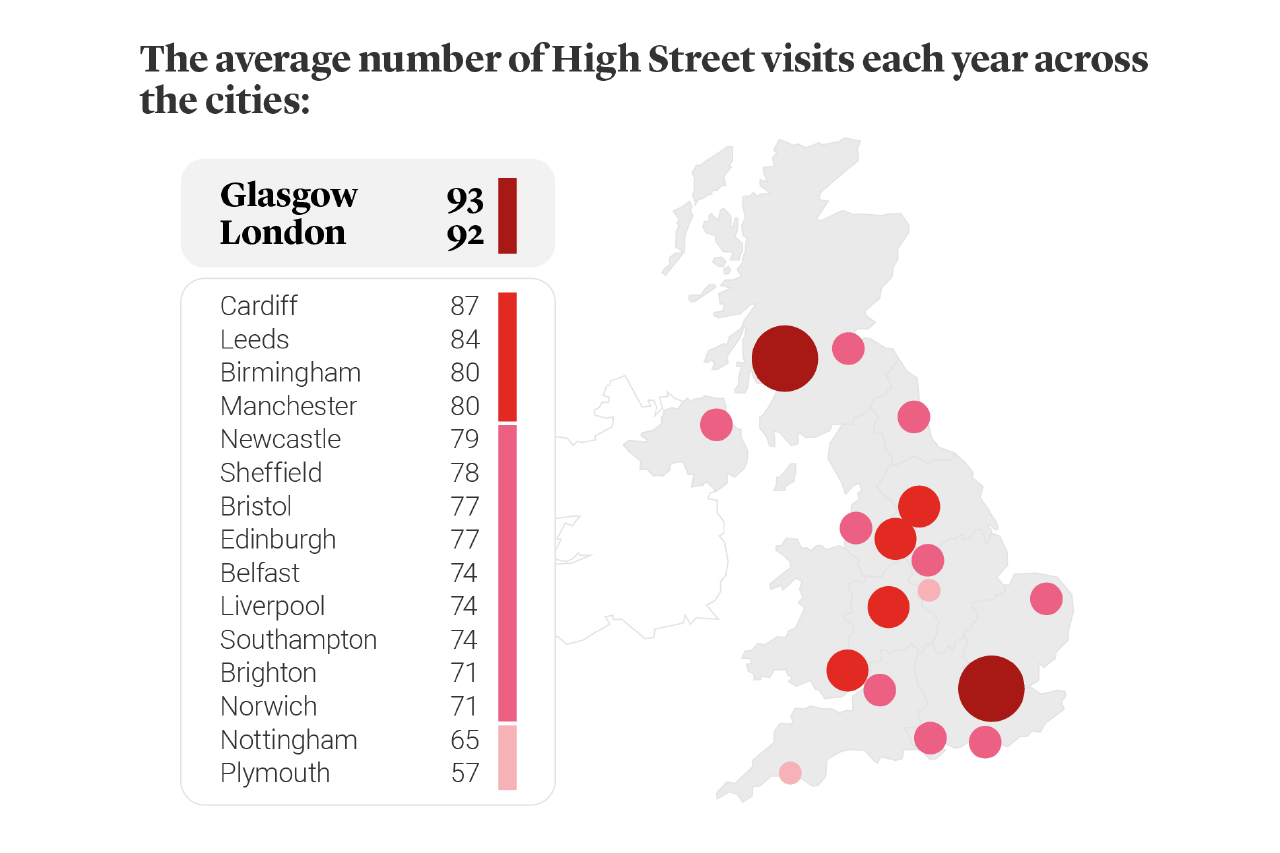
The perfect parade
We’ve explored how the high street has adapted and evolved in difficult times, but what does the future hold?
For some, it could mean a reimagining of high streets as cultural centres, such as Greater London’s Night Time Enterprise Zones. Areas may introduce events or activities like live music, light shows, winter markets and artistic displays.
Others support the ‘15-minute city’ planning concept where daily necessities should be a short walk or bike ride away.
When we asked the public what their perfect high street would look like, there were no shortage of ideas.
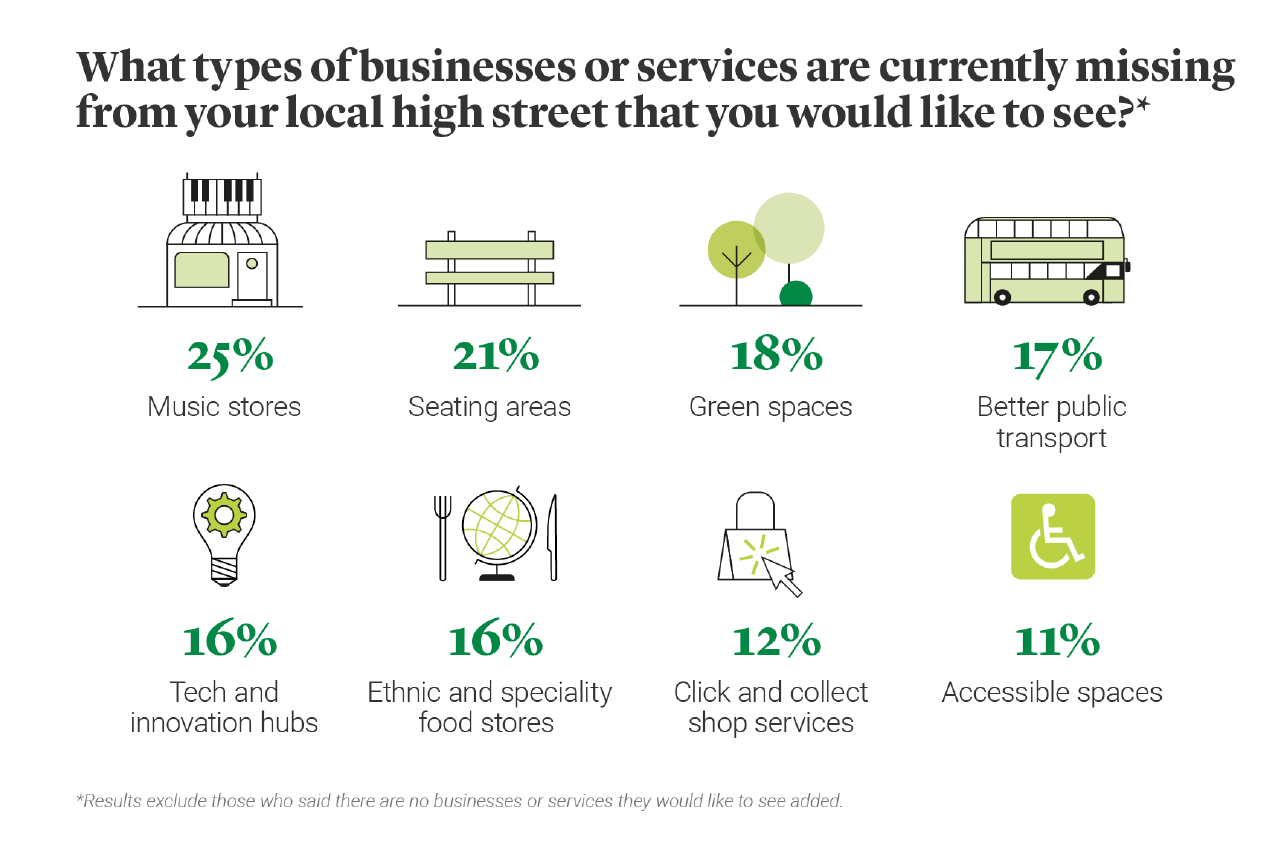
We also asked respondents if there was anything that would encourage them to visit their local high street more often. 35% said a wider choice of shops would be a pull factor (rising to 41% among women compared to 29% of men).
And at a time when Low Traffic Neighbourhood schemes have been hotly debated, 21% of the public told us that greater parking availability may persuade them to visit the high street, while 21% cited the appeal of cheaper parking.
More than just bricks and mortar
Although the landscape of the Great British High Street has evolved significantly from its historical roots, with the tales of butchers, bakers, and candlestick-makers, Legal & General’s survey underscores the enduring strength and resilience of the foundations underpinning these beloved community hubs.
In response to a cultural shift in how consumers interact with high streets, where the 'transactional' is no longer the priority, but rather the experience, Legal & General has committed to investing in communities via a place-based approach, innovating the shopping centres and retail spaces they own – assisting in shaping them into places for people to gather for experiences and address local needs.
One case of Legal & General’s commitment is The Dolphin Community and Shopping Destination in Poole. In partnership with the NHS, they welcomed the first outpatient assessment clinic in a shopping centre, and the first in Dorset, to help tackle long patient waiting lists. Remarkably, over half of the patients stay and shop within the asset following their medical appointment, thereby bolstering the high street's role as a community hub.
This isn’t the only Legal & General initiative yielding impressive results. The Kingland development which offered 10 independent Dorset-based businesses two years of rent and business rates exemption, injected vibrancy into the town centre, generating an additional £2.2 million spend across the Dolphin Centre and creating over 30 new jobs in its first year. Furthermore, 2022 saw the launch of Foundry, a suburban co-working space to boost local employment and the levelling up of workspaces.
Denz Ibrahim, Head of Retail and Futuring, Legal & General Investment Management Real Assets:"At Legal & General, we are wholeheartedly dedicated to understanding the sentiments and aspirations of the communities we collaborate with. We recognise that high streets are not just about transactions; they are about creating vibrant, multifaceted community spaces.
Through embracing a place-based approach, our commitment to fostering high streets as vibrant community hubs goes hand in hand with strategically integrating essential anchors - like healthcare, education, and workspaces to create inclusive and enduring destinations.
While there is still work to be done to fully realise the ultimate vision for high streets, it's encouraging to see the survey results confirming Brits’ continued affection and appreciation for them. We will persist in our efforts to enhance and preserve the unique character of the British high street, making it a vibrant and inclusive place for people to gather, connect, and create lasting memories.”

